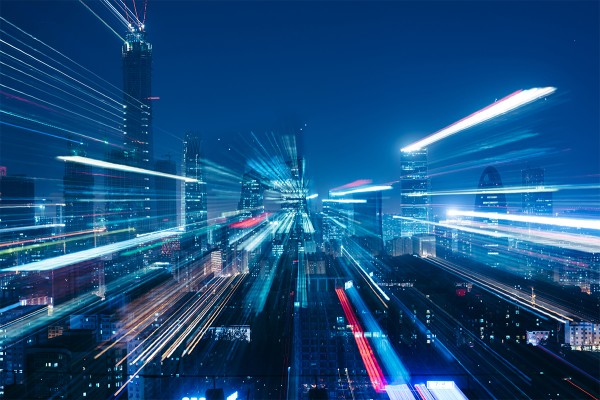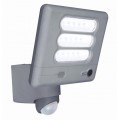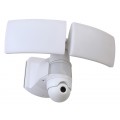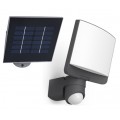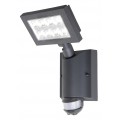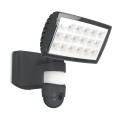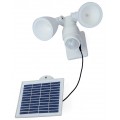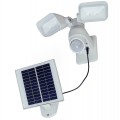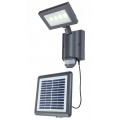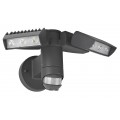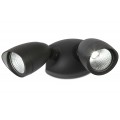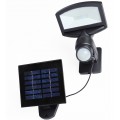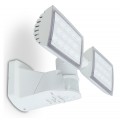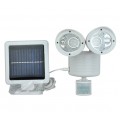Lighting is a fundamental part of an office, factory, store, supermarket, hospital, home, other building, parking lot, walkway, roadway, park or other improved location. Artificial lighting serves a large number of purposes. Security comprises one such purpose. It is widely known, for example, to utilize lighting in areas where such lighting can serve to illuminate the approach and/or presence of unauthorized persons and therefore facilitate discouraging such advances. Security lighting systems are extensively utilized for prevention of crime and vandalism in many communities, and also to work as deterrents. These security systems are frequently used to monitor residential and business properties, especially the areas encompassing entrances to buildings, during nighttime hours.
The use of light fixtures has turned into a widespread choice to effectively deter unwelcome activity and improve security for either commercial or private property. Security lighting is designed to increase the effectiveness of other security practices, illuminate people, objects, and places with low-glare light to make it easier for observation and identification; permit facial identification at distance of a minimum of 9 m (30 ft), and develop the perception of being identifiable; discourage criminal activity by increasing the chance of detection; facilitate the correct use of other security devices offered on the property; reduce the concern with crime by enhancing the perception of safety; and strengthen the public's feeling of comfort in getting into spaces and increase night-time pedestrian traffic. Properly lighted spaces can give the pedestrian sufficient response time to avoid (or get away from) potential threats. In extreme situations, quality lighting can help the pedestrian identify a safe refuge and/or escape routes.
When designing a security lighting project, the key lighting criteria are illuminance, uniformity, glare and shadows. Selecting and implementing the proper lighting equipment can make a big difference between a security lighting application that deters crime and one that basically aids criminals. Security lighting for a controlled area must provide uniform illumination in order that anyone moving in or around can be quickly seen. The security lighting design should also provide adequate illumination to ensure that intrusion or attempted intrusion into the area can be spotted, and any electronic surveillance devices for example security cameras can work in recommended tolerances. Careful selection and applicable required light levels are achieved with minimal glare and reliable operation. Of greater importance are nighttime performance problems such as light distribution, and control of glare and light trespass. Lighting facilitates visual perception of a space and area around the observer, and the observers' ability to see. In security situations where color recognition is essential, lamps should exhibit CRIs > 80. This will assist with the distinguishing of vehicular colors, skin tonal differences, and clothing colors.
Security lighting is installed to help protect people and property from illegal activities, as well as create a perception of security. Security lighting is particularly necessary for perimeter fences that surround secure areas including automobile lots, military bases, nuclear power plants, industrial sites, college campuses, etc. Area security lights are usually installed outdoors as a way to project a wide swath of visible light. They are employed at many different facilities, such as commercial (shopping malls, retail outlets, sports stadiums, tennis courts), industrial (factories, warehouses, farms), and government or military facilities (airports, military bases). Security light fixtures in most cases are located in close proximity above or on the sides of locations that people are likely to occupy. A typical building makes use of an array of fixtures to address occupants' needs. To get the largest area of lighting, the area security luminaire has a horizontally extending, cantilevered arm to support the light source away from the wall, pole, or other structure. By moving the light source off the wall, pole, or building, the cantilever arm offers the security light greater light dispersion around a 360 degree circumference.
The use of motion sensor to enable a lamp to provide a transient illumination is a well known technology. Generally, there are two main purposes for the necessity of a transient illumination by using a motion sensor. The first purpose is for power saving wherein the light source is enabled only if the user gets into the detection zone. Security lighting is bright enough to provide sufficient illumination to allow for ready visual identification of an unauthorized person in the vicinity by an onlooker. As security lighting can need the consumption of large volumes of energy, it is also seen to only trigger such illumination upon sensing the presence of such a person. The second goal is for threatening intruders by employing an instant extreme variation of luminance to accomplish the goal of security guard. The security lighting system must turn on automatically whenever the main lighting is turned off. When normal power is supplied the batteries are connected to a charger which delivers constant current to ensure they are maintained at full capacity. Upon loss of building power, the transfer switch connects batteries to lamps in the security fixtures.













